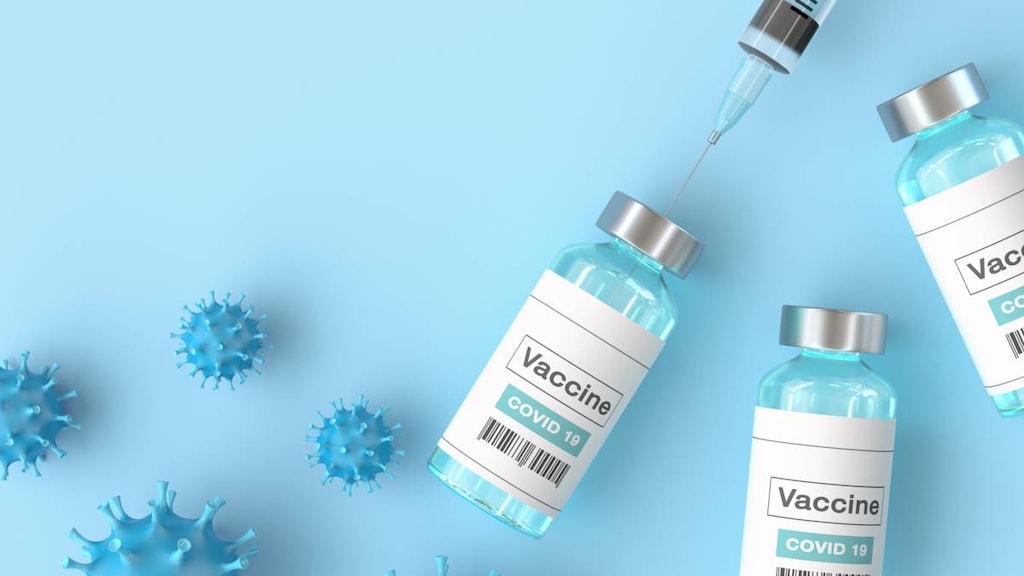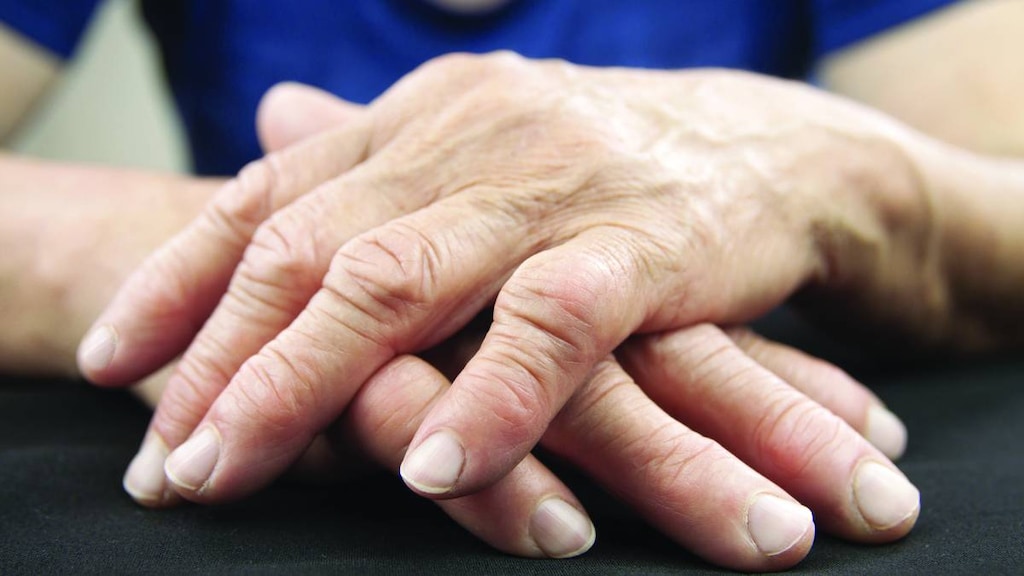Dosage Forms
Excipient information presented when available (limited, particularly for generics); consult specific product labeling.
Solution Prefilled Syringe, Subcutaneous [preservative free]:
Kineret: 100 mg/0.67 mL (0.67 mL) [contains disodium edta, polysorbate 80]
Pharmacology
Mechanism of Action
Antagonist of the interleukin-1 (IL-1) receptor. Endogenous IL-1 is induced by inflammatory stimuli and mediates a variety of immunological responses, including degradation of cartilage (loss of proteoglycans) and stimulation of bone resorption.
Pharmacokinetics/Pharmacodynamics
Time to Peak
SubQ: 3 to 7 hours
Half-Life Elimination
Terminal: 4 to 6 hours; Severe renal impairment (CrCl <30 mL/minute): ~7 hours; ESRD: 9.7 hours (Yang 2003)
Use in Specific Populations
Special Populations: Renal Function Impairment
Mean plasma clearance in patients with mild (CrCl 50 to 80 mL/minute), moderate (CrCl 30 to 49 mL/minute), severe (CrCl <30 mL/minute), and end-stage renal disease (ESRD) was decreased by 16%, 50%, 70%, and 75%, respectively.
Use: Labeled Indications
Neonatal-onset multisystem inflammatory disease: Treatment of neonatal-onset multisystem inflammatory disease (NOMID).
Rheumatoid arthritis: Reduction in signs and symptoms and slowing the progression of structural damage of moderately to severely active rheumatoid arthritis (RA) in patients 18 years and older who have failed 1 or more disease-modifying antirheumatic drugs (DMARDs).
Use: Off Label
Familial Mediterranean feverbyes
Evidence from a small number of patients in a short-term controlled trial and noncontrolled trials suggests that anakinra may reduce the frequency of attacks in patients with familial Mediterranean fever (FMF) who are resistant or intolerant to colchicine. Additional data are necessary to further define the role of anakinra in this condition.
Based on European League Against Rheumatism (EULAR) guidelines for the management of FMF, interleukin-1 (IL-1) blockers are recommended for patients unresponsive or resistant to the maximum dose of colchicine.
Gout, treatment of acute flares (when conventional therapy is ineffective, contraindicated, or not tolerated)cyes
Data from a case series and several retrospective chart reviews have suggested anakinra may be beneficial for the treatment of acute flare of gout in patients who are refractory to, intolerant of, or have contraindications to conventional therapy (eg, colchicine, NSAIDs, corticosteroids) Ghosh 2013, Ottaviani 2013, So 2007. Additional data may be necessary to further define the role of anakinra in this condition.
Based on European League Against Rheumatism (EULAR) evidence-based recommendations for the management of gout, interleukin-1 (IL-1) blockers (eg, anakinra) may be considered for treating acute gout flares in patients with frequent flares and who have contraindications to other anti-gout therapies including colchicine, NSAIDS, and corticosteroids. Following flare treatment with interleukin-1 (IL-1) blockers, urate-lowering therapy should be adjusted to meet uricemia target levels.
Pericarditis, recurrentcyes
Evidence from small controlled and noncontrolled trials and several case reports/series indicates that anakinra may be effective in preventing recurrences in patients with recurrent pericarditis refractory to conventional therapy.
European Society of Cardiology (ESC) guidelines on the diagnosis and management of pericardial diseases recommend that intravenous immunoglobulin, anakinra, or azathioprine be considered in cases of infection-negative, corticosteroid-dependent recurrent pericarditis in patients not responsive to colchicine.
Contraindications
Hypersensitivity to E. coli-derived proteins, anakinra, or any component of the formulation
Dosage and Administration
Dosing: Adult
Neonatal-onset multisystem inflammatory disease (NOMID): SubQ: Initial: 1 to 2 mg/kg daily in 1 to 2 divided doses; adjust dose in 0.5 to 1 mg/kg increments as needed; usual maintenance dose: 3 to 4 mg/kg daily (maximum: 8 mg/kg daily). Note: Once-daily administration is preferred; however, the dose may also be divided and administered twice daily.
Familial Mediterranean fever (off-label use): SubQ: 100 mg once daily (Ben-Zvi 2016)
Gout, treatment of acute flares (when conventional therapy is ineffective, contraindicated, or not tolerated) (off-label use): SubQ: 100 mg once daily (Ghosh 2013; Ottaviani 2013; So 2007). Most patients received therapy for 3 days (So 2007). Additional data may be necessary to further define the role of anakinra in this condition.
Pericarditis (recurrent) (off-label use): SubQ: 100 mg once daily. Dosing based on limited data with treatment periods up to 6 months (Brucato 2016; Cantarini 2010). Additional data is necessary to further define the role of anakinra in the treatment of this condition.
Rheumatoid arthritis (RA): SubQ: 100 mg once daily (administer at approximately the same time each day)
Dosing: Geriatric
Refer to adult dosing.
Dosing: Pediatric
Familial Mediterranean Fever; colchicine-resistant: Very limited data available: Children ≥2 years and Adolescents: SubQ: 2 mg/kg/dose once daily; dose, frequency, and duration of therapy were adjusted as needed based on clinical response, usual reported duration: 4 to 8 months; some patients may require a longer duration. Patients continued to receive concomitant colchicine (Eroglu 2015).
Juvenile idiopathic arthritis (JIA): Limited data available:
Systemic-onset JIA (SOJIA): Children and Adolescents: SubQ: Initial: 1 to 2 mg/kg/dose once daily; maximum initial dose: 100 mg; if no response, may titrate typically at 2-week intervals by doubling dose up to 4 mg/kg/dose once daily; maximum dose: 200 mg (Dewitt 2012; Gattorno 2006; Hedrich 2012; Irigoyen 2006; Lequerré 2008; Nigrovi 2011; Quartier 2011)
Polyarticular course JIA: Children ≥2 years and Adolescents: SubQ: 1 mg/kg once daily; maximum dose: 100 mg (Ilowite 2009; Reiff 2005)
Kawasaki disease, refractory to IVIG: Very limited data available; reported dosing highly variable: Infants >2 months and young children (eg, <4 years): SubQ: 1 to 6 mg/kg/day in 1 to 2 divided doses; dosing based on case reports and expert recommendation as an alternate therapeutic option; a case report in a 2-year old reported a dose of 1 mg/kg/dose once daily; another case report in a 3-year old reported a dose of 2 mg/kg/dose once daily for 14 days; a higher dosing regimen was described in an 11-week old who had therapy initiated at 3 mg/kg/dose twice daily and further increased to 3 mg/kg/dose three times daily due to continued worsening clinical presentation; after clinical improvement and corticosteroid taper begun the anakinra dose was decreased to 4 mg/kg/dose twice daily (AHA [McCrindle 2017]; Cohen 2012; Sanchez-Manubens 2017; Shafferman 2014)
Neonatal-onset multisystem inflammatory disease (NOMID) or chronic infantile neurological, cutaneous, and articular syndrome (CINCA) [cryopyrin-associated periodic syndromes (CAPS)]: Infants, Children, and Adolescents: SubQ: Initial: 1 to 2 mg/kg/day in 1 to 2 divided doses; adjust dose in 0.5 to 1 mg/kg increments as needed to control inflammation; usual maintenance dose: 3 to 4 mg/kg/day; maximum daily dose: 8 mg/kg/day. Note: Once-daily administration is preferred; however, the dose may also be divided and administered twice daily.
Rheumatoid arthritis: Adolescents ≥18 years: SubQ: 100 mg once daily; administer at approximately the same time each day
Administration
SubQ: Allow solution to warm to room temperature prior to use (30 minutes). Inject into outer area of upper arms, abdomen (do not use within 2 inches of belly button), front of middle thighs, or upper outer buttocks. Rotate injection sites; do not administer into tender, swollen, bruised, red, or hard skin or skin with scars or stretch marks.
Storage
Store in refrigerator at 2°C to 8°C (36°F to 46°F); do not freeze. Do not shake. Protect from light. Discard any unused portion.
Drug Interactions
Anti-TNF Agents: May enhance the adverse/toxic effect of Anakinra. An increased risk of serious infection during concomitant use has been reported. Avoid combination
BCG (Intravesical): Immunosuppressants may diminish the therapeutic effect of BCG (Intravesical). Avoid combination
Belimumab: May enhance the immunosuppressive effect of Biologic Disease-Modifying Antirheumatic Drugs (DMARDs). Avoid combination
Biologic Disease-Modifying Antirheumatic Drugs (DMARDs): May enhance the immunosuppressive effect of other Biologic Disease-Modifying Antirheumatic Drugs (DMARDs). Avoid combination
Canakinumab: Interleukin-1 Receptor Antagonist may enhance the adverse/toxic effect of Canakinumab. Whether such a combination will also alter the therapeutic response to one or both agents is unclear. Avoid combination
Cladribine: May enhance the immunosuppressive effect of Immunosuppressants. Avoid combination
Coccidioides immitis Skin Test: Immunosuppressants may diminish the diagnostic effect of Coccidioides immitis Skin Test. Monitor therapy
Denosumab: May enhance the adverse/toxic effect of Immunosuppressants. Specifically, the risk for serious infections may be increased. Monitor therapy
Echinacea: May diminish the therapeutic effect of Immunosuppressants. Consider therapy modification
Fingolimod: Immunosuppressants may enhance the immunosuppressive effect of Fingolimod. Management: Avoid the concomitant use of fingolimod and other immunosuppressants when possible. If combined, monitor patients closely for additive immunosuppressant effects (eg, infections). Consider therapy modification
Leflunomide: Immunosuppressants may enhance the adverse/toxic effect of Leflunomide. Specifically, the risk for hematologic toxicity such as pancytopenia, agranulocytosis, and/or thrombocytopenia may be increased. Management: Consider not using a leflunomide loading dose in patients receiving other immunosuppressants. Patients receiving both leflunomide and another immunosuppressant should be monitored for bone marrow suppression at least monthly. Consider therapy modification
Natalizumab: Immunosuppressants may enhance the adverse/toxic effect of Natalizumab. Specifically, the risk of concurrent infection may be increased. Avoid combination
Nivolumab: Immunosuppressants may diminish the therapeutic effect of Nivolumab. Consider therapy modification
Ocrelizumab: May enhance the immunosuppressive effect of Immunosuppressants. Monitor therapy
Pidotimod: Immunosuppressants may diminish the therapeutic effect of Pidotimod. Monitor therapy
Pimecrolimus: May enhance the adverse/toxic effect of Immunosuppressants. Avoid combination
Roflumilast: May enhance the immunosuppressive effect of Immunosuppressants. Consider therapy modification
Siponimod: Immunosuppressants may enhance the immunosuppressive effect of Siponimod. Monitor therapy
Sipuleucel-T: Immunosuppressants may diminish the therapeutic effect of Sipuleucel-T. Management: Evaluate patients to see if it is medically appropriate to reduce or discontinue therapy with immunosuppressants prior to initiating sipuleucel-T therapy. Consider therapy modification
Smallpox and Monkeypox Vaccine (Live): Immunosuppressants may diminish the therapeutic effect of Smallpox and Monkeypox Vaccine (Live). Monitor therapy
Tacrolimus (Topical): May enhance the adverse/toxic effect of Immunosuppressants. Avoid combination
Tertomotide: Immunosuppressants may diminish the therapeutic effect of Tertomotide. Monitor therapy
Trastuzumab: May enhance the neutropenic effect of Immunosuppressants. Monitor therapy
Vaccines (Inactivated): Immunosuppressants may diminish the therapeutic effect of Vaccines (Inactivated). Management: Vaccine efficacy may be reduced. Complete all age-appropriate vaccinations at least 2 weeks prior to starting an immunosuppressant. If vaccinated during immunosuppressant therapy, revaccinate at least 3 months after immunosuppressant discontinuation. Consider therapy modification
Vaccines (Live): Immunosuppressants may enhance the adverse/toxic effect of Vaccines (Live). Immunosuppressants may diminish the therapeutic effect of Vaccines (Live). Management: Avoid use of live organism vaccines with immunosuppressants; live-attenuated vaccines should not be given for at least 3 months after immunosuppressants. Exceptions: Smallpox and Monkeypox Vaccine (Live). Avoid combination
Adverse Reactions
>10%:
Central nervous system: Headache (12% to 14%)
Gastrointestinal: Vomiting (NOMID: 14%)
Immunologic: Antibody development (RA: 49%; neutralizing: 2%; no correlation of antibody development and adverse effects)
Infection: Infection (RA: 39%; serious infection: 2% to 3%; including cellulitis, pneumonia, and bone and joint infections)
Local: Injection site reaction (RA: 71%; mild: 73%; moderate: 24%; severe: 2% to 3%; NOMID: 16%; mild: 76%; moderate: 24%)
Neuromuscular & skeletal: Arthralgia (NOMID: 12%)
Respiratory: Nasopharyngitis (NOMID: 12%)
Miscellaneous: Fever (NOMID: 12%)
1% to 10%:
Gastrointestinal: Nausea (RA: 8%), diarrhea (RA: 7%)
Hematologic & oncologic: Eosinophilia (RA: 9%), decreased white blood cell count (RA: 8%), change in platelet count (RA; decreased: 2%
Frequency not defined:
Dermatologic: Skin rash (NOMID)
Endocrine & metabolic: Hypercholesterolemia (RA)
Respiratory: Upper respiratory tract infection (NOMID)
<1%, postmarketing, and/or case reports: Hepatitis (noninfectious), hypersensitivity reaction (including anaphylaxis, angioedema, pruritus, skin rash, urticaria), increased serum transaminases, metastases (malignant lymphoma, malignant melanoma), opportunistic infection, thrombocytopenia (including severe)
Warnings/Precautions
Concerns related to adverse effects:
- Anaphylaxis/hypersensitivity reactions: Hypersensitivity reactions, including anaphylactic reactions and angioedema, have been reported; discontinue use if severe hypersensitivity occurs; medications for the treatment of hypersensitivity reactions should be available for immediate use.
- Infections: Associated with an increased risk of serious infections in rheumatoid arthritis studies. Anakinra should not be initiated in patients with an active infection. If a patient receiving anakinra for rheumatoid arthritis develops a serious infection, therapy should be discontinued; if a patient receiving anakinra for neonatal-onset multisystem inflammatory disease (NOMID) develops a serious infection, the risk of a NOMID flare should be weighed against the risks associated with continued treatment. Safety and efficacy have not been evaluated in immunosuppressed patients or patients with chronic infections; the impact on active or chronic infections has not been determined. Immunosuppressive therapy (including anakinra) may lead to reactivation of latent tuberculosis or other atypical or opportunistic infections; test patients for latent TB prior to initiation, and treat latent TB infection prior to use.
- Injection site reactions: Injection site reactions commonly occur (within first 4 weeks of therapy) and are generally mild with a duration of 14 to 28 days.
- Malignancy: May affect defenses against malignancies; impact on the development and course of malignancies is not fully defined. As compared to the general population, an increased risk of lymphoma has been noted in clinical trials; however, rheumatoid arthritis has been previously associated with an increased rate of lymphoma.
- Neutropenia: A decrease in neutrophil count may occur during treatment. Assess neutrophil count at baseline, monthly for 3 months, then every 3 months for up to 1 year. In a limited number of patients with NOMID, neutropenia resolved over time with continued anakinra administration.
Disease-related concerns:
- Asthma: Use with caution in patients with asthma; may have increased risk of serious infection.
- Renal impairment: Use caution in patients with renal impairment; extended dosing intervals (every other day) are recommended for severe renal insufficiency (CrCl <30 mL/minute) and ESRD.
Concurrent drug therapy issues:
- Drug-drug interactions: Potentially significant interactions may exist, requiring dose or frequency adjustment, additional monitoring, and/or selection of alternative therapy. Consult drug interactions database for more detailed information.
Special populations:
- Elderly: Use caution due to the potential higher risk for infections.
Dosage form specific issues:
- Polysorbate 80: Some dosage forms may contain polysorbate 80 (also known as Tweens). Hypersensitivity reactions, usually a delayed reaction, have been reported following exposure to pharmaceutical products containing polysorbate 80 in certain individuals (Isaksson 2002; Lucente 2000; Shelley 1995). Thrombocytopenia, ascites, pulmonary deterioration, and renal and hepatic failure have been reported in premature neonates after receiving parenteral products containing polysorbate 80 (Alade 1986; CDC 1984). See manufacturer's labeling.
Other warnings/precautions:
- Immunizations: Patients should be brought up to date with all immunizations before initiating therapy; live vaccines should not be given concurrently. There is no data available concerning the effects of therapy on vaccination or secondary transmission of live vaccines in patients receiving therapy.
Monitoring Parameters
CBC with differential (baseline, then monthly for 3 months, then every 3 months for a period up to 1 year); TB test (baseline); serum creatinine; signs/symptoms of infection
Pregnancy
Pregnancy Considerations
Information related to the use of anakinra during pregnancy is limited (İlgen 2017; Götestam Skorpen 2016; Makol 2011; Ostensen 2011; Youngstein 2017). Until additional information is available, anakinra should be discontinued prior to conception if possible; use may continue when other treatment options are not effective (Götestam Skorpen 2016).
Women exposed to anakinra during pregnancy may contact the Organization of Teratology Information Services (OTIS), Rheumatoid Arthritis and Pregnancy Study at 1-877-311-8972.
Patient Education
What is this drug used for?
- It is used to treat rheumatoid arthritis.
- It is used to treat Neonatal-Onset Multisystem Inflammatory Disease (NOMID).
- It may be given to you for other reasons. Talk with the doctor.
Frequently reported side effects of this drug
- Headache
- Nausea
- Vomiting
- Diarrhea
- Joint pain
- Sore throat
- Runny nose
- Stuffy nose
- Abdominal pain
Other side effects of this drug: Talk with your doctor right away if you have any of these signs of:
- Infection
- Bruising
- Bleeding
- Severe injection site irritation
- Severe dizziness
- Passing out
- Fast heartbeat
- Abnormal heartbeat
- Sweating a lot
- Signs of a significant reaction like wheezing; chest tightness; fever; itching; bad cough; blue skin color; seizures; or swelling of face, lips, tongue, or throat.
Note: This is not a comprehensive list of all side effects. Talk to your doctor if you have questions.
Consumer Information Use and Disclaimer: This information should not be used to decide whether or not to take this medicine or any other medicine. Only the healthcare provider has the knowledge and training to decide which medicines are right for a specific patient. This information does not endorse any medicine as safe, effective, or approved for treating any patient or health condition. This is only a brief summary of general information about this medicine. It does NOT include all information about the possible uses, directions, warnings, precautions, interactions, adverse effects, or risks that may apply to this medicine. This information is not specific medical advice and does not replace information you receive from the healthcare provider. You must talk with the healthcare provider for complete information about the risks and benefits of using this medicine.




